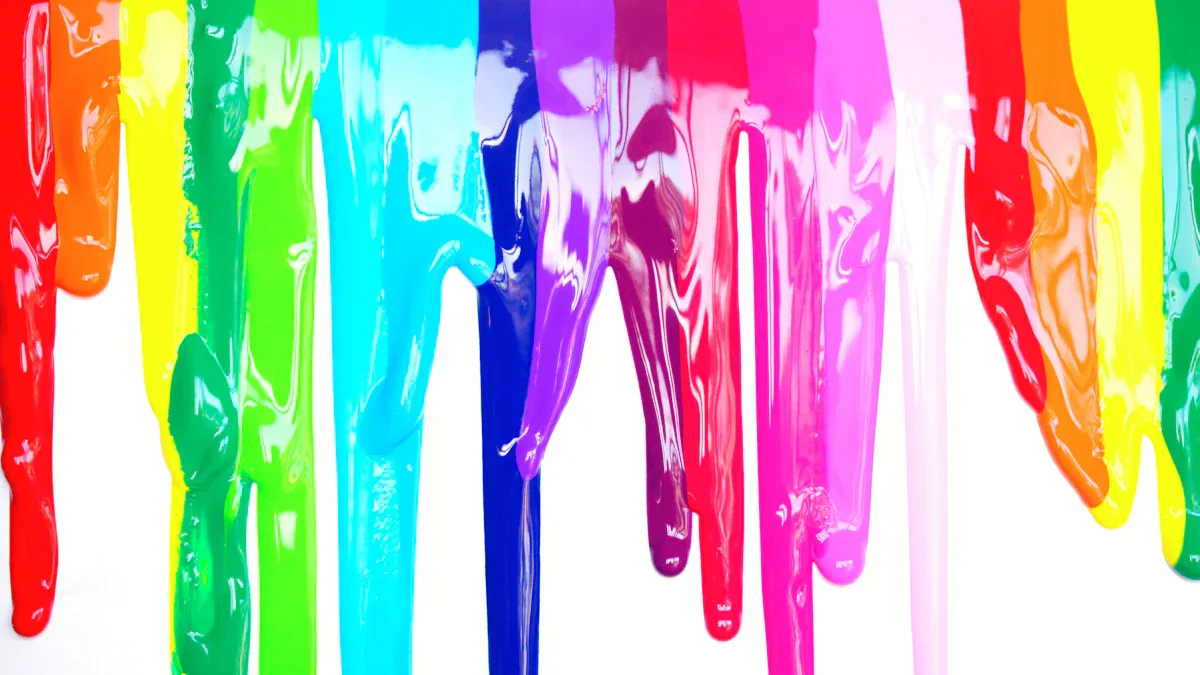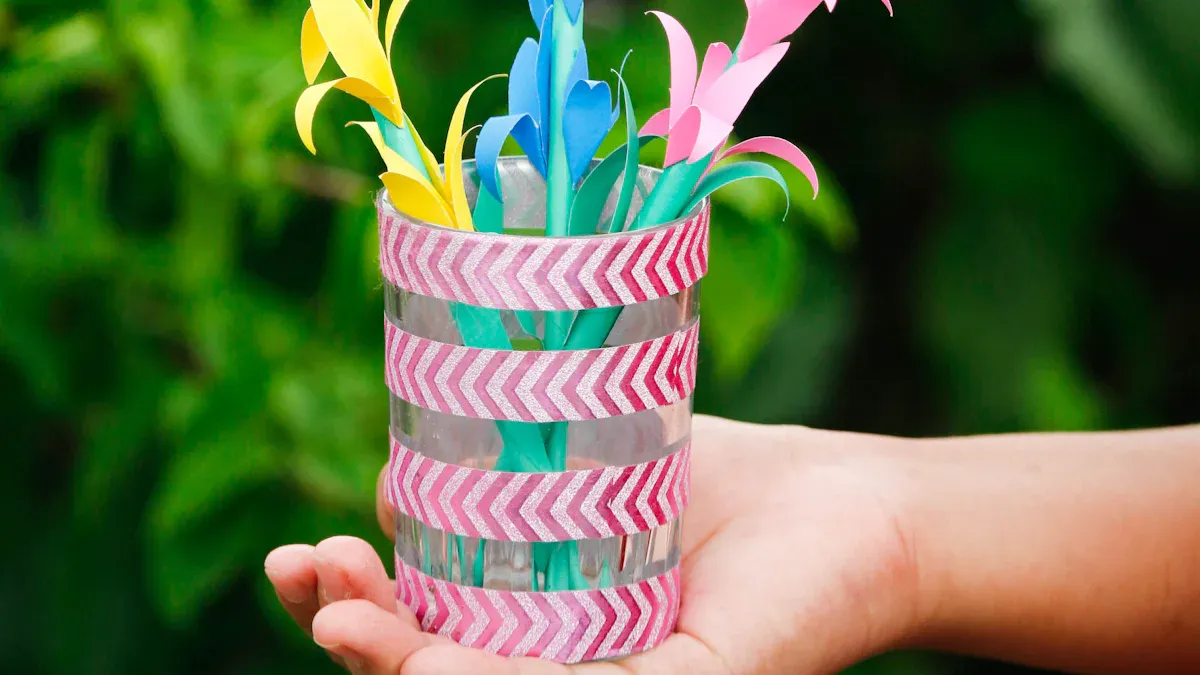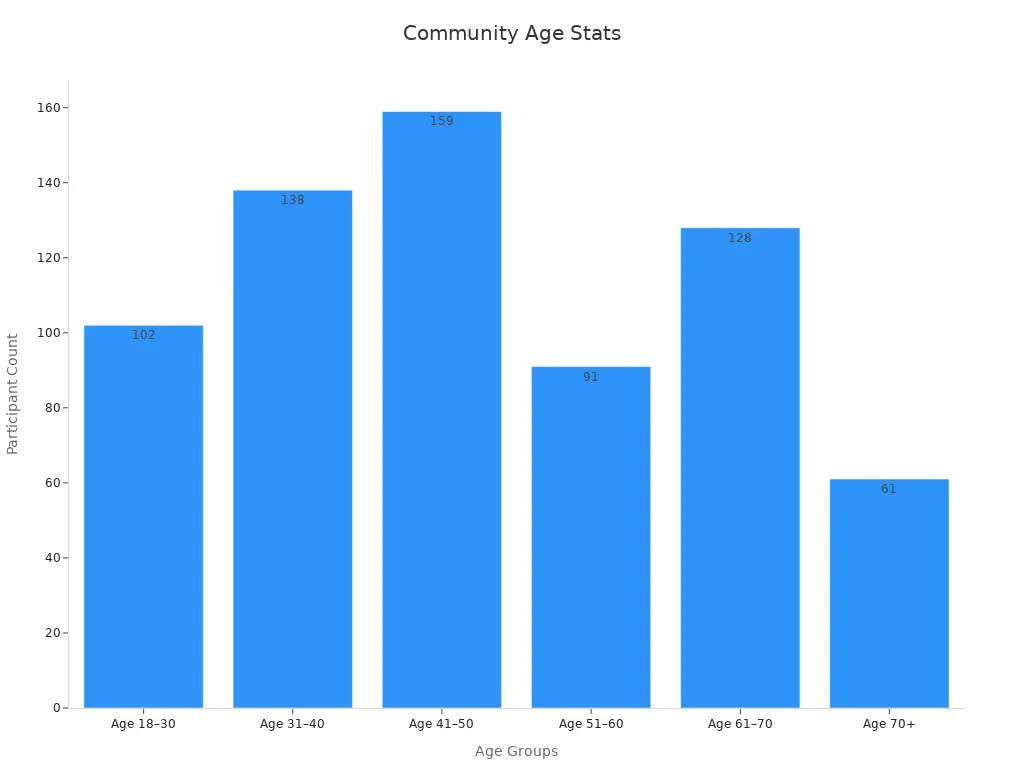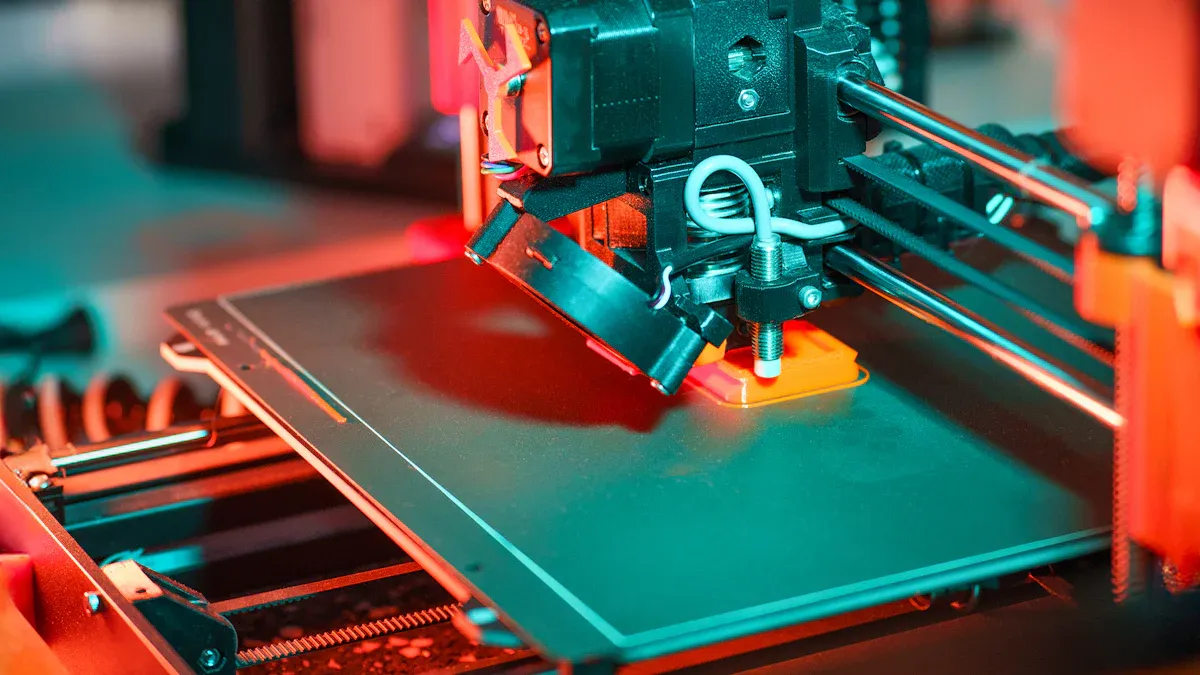10 Best Craft Trends of 2025 You Need to Try

Crafting isn’t just making things; it’s showing your creativity. It’s also about enjoying the process of creating. Whether you sew, paint, or design, crafting turns simple items into amazing things. Did you know the art and craft market might reach $35.29 billion by 2032? This growth shows how much people enjoy making and sharing crafts. Crochet sales alone went up by 75% recently. This proves handmade projects help people connect. Why not check out the craft trends of 2025? You might find your new favorite hobby!
Key Takeaways
Eco-friendly crafting is becoming popular. Use natural materials like organic cotton or reuse old things to make cool projects.
Crafting helps you feel calm and happy. Spend some time daily on fun activities like knitting or painting to relax.
Crafting with others builds friendships. Join local groups or host meetups to share ideas and connect with people.
AI tools can make crafting easier. Use apps to design and customize your projects quickly.
Fixing clothes can be fun and creative. Repair clothes with bright stitches or patches to save them from being thrown away.
1. Sustainable Crafting

Eco-friendly materials and methods
Sustainable crafting means using materials that are good for Earth. You can reuse old things like fabric pieces or glass jars. Turn them into something cool and new. Upcycling is another fun idea. For example, change an old T-shirt into a stylish bag. Many crafters now use biodegradable packaging to cut down on trash.
Here are some eco-friendly materials to try:
Plant-based glues for paper crafts.
Bamboo or hemp fibers for weaving projects.
Lab-made diamonds or pineapple leaves for jewelry.
These materials help the planet and make your crafts special.
Why sustainability matters in crafting
Sustainability isn’t just a trend—it helps protect the Earth. Using eco-friendly items like bamboo or natural fibers lowers crafting’s impact on nature. Hemp, for instance, is strong and soft, making it great for projects.
More people now care about eco-friendly crafts. Did you know 73% of UK shoppers buy handmade items yearly? Many prefer eco-friendly goods, proving creativity and caring for the planet go together.
Tips for starting sustainable projects
Starting sustainable crafting is simple. Follow these tips to begin:
Start small: Use things you already have, like old clothes or jars.
Shop smart: Buy eco-friendly items like organic fabrics or plant-based glue.
Learn techniques: Try fixing clothes or upcycling to make old things new.
Spread the word: Show your eco-friendly crafts to friends or online to inspire others.
A study shows sharing the benefits of sustainable crafting can get more people involved. Whether you make jewelry, home decor, or clothes, every effort helps create a greener world.
2. Emotional Support Crafts
Crafting to relax and stay calm
Making crafts is a great way to unwind and focus. When you work with your hands, it helps take your mind off worries. Activities like sewing or painting can lower stress levels. Research shows sewing is the most calming craft, followed by painting. Studies also found regular crafting reduces stress in just four weeks. The benefits can last for months after you start.
Crafting also helps you stay present. It keeps your mind on each stitch, brushstroke, or fold. This focus can ease anxiety and lift your mood. Whether you're knitting a scarf or making a scrapbook, crafting brings peace and a sense of achievement.
Trending crafts: knitting and embroidery
Knitting and embroidery are super popular again in 2025. These old-school crafts are fun and help you relax. Knitting’s repeated motions feel soothing, while embroidery lets you create colorful designs. Social media and DIY trends have made these crafts cool again. Many people share their projects online, inspiring others to try them.
Embroidery hoop sets are selling fast because of this trend. Hand embroidery is loved for being simple and flexible. You can make detailed floral designs or bold modern patterns. Knitting is great for cozy scarves, blankets, or stylish clothes.
Adding emotional support crafting to your day
It’s easy to fit crafting into your routine. Try these tips to begin:
Make time: Spend 15–30 minutes a day crafting. Use it as "me time."
Pick an easy project: Start small, like knitting a coaster or simple embroidery.
Join others: Find local craft groups or online communities. Crafting with others can be fun and supportive.
Set up a cozy spot: Create a quiet space with good light and your supplies. A calm area makes crafting more enjoyable.
Crafting isn’t just a pastime—it’s a way to feel better emotionally. Whether you try new trends or stick to classic crafts, it can help you feel happier and more relaxed.
3. Social Crafting
Making friends through group projects
Crafting isn’t just about creating things—it’s also about connecting. Working on group projects helps you feel part of a community. Imagine painting a mural, sewing a quilt, or making a scrapbook together. These activities bring people closer, start conversations, and create fun memories.
Crafting events are now a big part of local communities. In recent years, crafting meetups grew by 28%, and attendance rose by 37%. Local shops, like Craft Loft, host workshops that teach skills and help people make friends. Crafting with others can turn strangers into buddies.
How to plan a crafting meetup
Planning a crafting meetup is simple and fun. Start by choosing a theme or project everyone can enjoy. For example, you could host a “paint and sip” night or a holiday craft session. Use affordable supplies so everyone can join.
Here are tips for a great meetup:
Pick a comfy spot: A café, library, or your home works well.
Invite different people: Ask friends, family, and neighbors to join.
Offer snacks: Treats make the event more fun.
Share ideas: Encourage everyone to bring their own craft supplies or ideas.
You’ll see how crafting together builds strong friendships.
Why crafting with others is great
Crafting in groups isn’t just enjoyable—it’s good for your mind too. Studies show it boosts confidence, improves mood, and makes life feel better. Here’s a quick look at the benefits:
Benefit | Statistic |
|---|---|
Confidence | Big improvement (t = 6.86, P < 0.001) |
Creativity | Increased (t = 8.12, P < 0.001) |
Mood and happiness | Better in all 19 studies |
Social skills | Strong improvement (P < 0.001) |
Lower depression | Better than control group (P = 0.002) |
Crafting with others also teaches you new skills and gives fresh ideas. It keeps you motivated to finish projects too. Social crafting isn’t just a trend—it’s a way to connect, learn, and grow.

4. AI-Assisted Crafting
AI tools for design and personalization
AI is changing how people create crafts. These tools help you design and personalize projects easily. They can suggest colors, make patterns, and create templates. For example, upload a photo, and AI can turn it into a cross-stitch or laser-cut design. It’s like having a helper for your creative ideas.
Some tools even let you preview your work before starting. You can test quilt patterns with different fabrics or try color schemes for paintings. This saves time and helps avoid mistakes. It makes crafting faster and more fun.
Examples of AI-powered crafting apps
Many apps use AI to make crafting easier and exciting. Here are some you can try:
Canva: Great for making digital designs like cards or wall art. Its AI suggests layouts and fonts for your project.
PatternSmith: Helps you create sewing patterns with accuracy. It’s good for all skill levels.
DeepArt: Turns your photos into amazing art using AI filters.
Glowforge App: Perfect for laser cutting, it helps you design detailed projects quickly.
These apps are simple to use and spark creative ideas.
How to use AI to enhance your creativity
AI doesn’t replace your style—it adds to it. Use AI apps that match your hobbies. If you sew, try an app for patterns. If you paint, explore tools for color ideas.
You can mix AI with traditional crafting too. Start with an AI design, then add your own touches. The options are endless. AI helps you try new trends and grow your skills.
Tip: Experiment with AI tools, but keep your personal style. Your unique touch makes your crafts stand out.
5. Visible Mending
Fixing clothes with creativity
Visible mending means fixing clothes in a stylish way. Instead of hiding holes or tears, you make them stand out. Use colorful stitches, patches, or embroidery to repair clothes. For example, add a bright patch to ripped jeans. Or, sew bold designs on a sweater to make it special. These fixes turn old clothes into unique pieces.
You can also mend other items like bags or tablecloths. This trend celebrates flaws and gives things a second chance. It’s a fun way to be creative and cut down on waste.
Tip: Begin with easy stitches like running or whip stitches. Try Sashiko or patchwork for more decoration.
Fun ways to mend clothes
There are many ways to try visible mending. Here are some ideas:
Sashiko stitching: A Japanese style with neat, geometric patterns.
Patchwork: Cover holes with colorful or patterned fabric patches.
Embroidery: Sew flowers, animals, or cool designs over damaged spots.
Darning: Fix knitwear holes with yarn in fun colors.
Mix these methods to match your style. Whether simple or bold, there’s a technique for everyone.
Why visible mending is popular in 2025
Visible mending is a big trend this year. People want to avoid fast fashion and save the planet. Fixing clothes helps reduce waste. Did you know 11.3 million tons of textiles went to U.S. landfills in 2018? Mending is a creative way to fight this problem.
It’s also a way to show your personality. Many crafters use repairs to share their artistic side. Sashiko is loved because it’s both useful and pretty. The New York Times says visible mending helps people reject fast fashion and save money. This trend shows people want meaningful, lasting clothes.
Visible mending isn’t just useful—it’s exciting. You save clothes and make them your own. Grab a needle and thread to start your sustainable style journey!
6. Laser Cutting and Engraving

Crafting with precision and creativity
Laser cutting and engraving make crafting more exciting and detailed. These methods help you create designs with perfect accuracy. You can cut materials like wood, acrylic, or leather easily. Make items like jewelry, signs, or decorations with a laser cutter. The best part? You don’t need to be an expert to start. With the right machine, your ideas can become real.
This trend is great if you enjoy using new tools. Laser cutting mixes technology with art, offering endless options. Picture designing on your computer and watching a laser cutter bring it to life. It feels like magic in action!
Popular projects like wooden lampshades
Wooden lampshades are a favorite project in this trend. They are both useful and beautiful. You can design patterns that create cool shadows when lit. Other fun projects include custom coasters, engraved cutting boards, and keychains. These make awesome gifts or unique home items.
Laser engraving is also popular for personalizing things. Add names, quotes, or designs to wallets, glassware, or more. The options are limitless. These projects add a special touch to your creations.
Easy tips for laser crafting beginners
Starting laser crafting might seem hard, but it’s simple. Follow these tips to begin:
Pick a beginner machine: Choose a laser cutter with easy instructions. Many come with helpful guides.
Start small: Try simple items like coasters or keychains first. This helps you learn step by step.
Use free templates: Find free designs online to practice with.
Test materials: Experiment with wood, acrylic, or leather to see what works best.
Laser cutting and engraving are fun and creative trends for 2025. They let you mix art with technology to make amazing things. Why not give it a shot?
7. DIY Home Fragrance
Making wax melts and reed diffusers
DIY home fragrance projects are fun and easy to try. Wax melts are small scented wax pieces that smell great when heated. They don’t need flames, so they’re safer than candles. Reed diffusers use oils and sticks to spread a gentle scent in your home. Both are simple to make and can be customized.
To make wax melts, you’ll need soy or beeswax, essential oils, and molds. Melt the wax, mix in your favorite scent, and pour it into molds to cool. For reed diffusers, mix a carrier oil like almond oil with essential oils in a jar. Add reeds, and the scent will fill your room naturally.
Tip: Try seasonal scents like cinnamon for winter or citrus for summer. This keeps your home smelling fresh all year.
Eco-friendly materials for fragrance crafting
Eco-friendly crafting is popular, and DIY home fragrance fits right in. Using safe and sustainable materials helps the planet and your family. Here are some good choices:
Soy or beeswax: These are natural and break down easily.
Essential oils: Pick organic oils for a clean, natural scent.
Reusable containers: Glass jars or ceramic pots look nice and reduce waste.
Natural reeds: Bamboo or rattan reeds work best for diffusers.
More people care about sustainability now. About 60% of shoppers choose eco-friendly options, making these materials a smart choice.
Why DIY home fragrance is trending
DIY home fragrance is popular for many reasons. During the COVID-19 lockdowns, 85% of UK people started DIY projects. This interest hasn’t gone away. People enjoy being creative and making personal items.
Flameless options like wax melts are especially loved. They’re safe, affordable, and great for gifts or selling. The U.S. DIY market was worth $14.8 billion in 2020, showing how much people enjoy crafting at home.
DIY home fragrance is a fun way to save money and reduce waste. It’s also a creative hobby that makes your home smell amazing. Why not give it a try?
8. Vintage-Inspired Jewelry
Bold statement pieces and retro designs
Vintage-inspired jewelry is super trendy in 2025. Bold designs and retro styles make outfits stand out. Think chunky gold chains, big earrings, and colorful rings. These pieces are inspired by the Victorian era, Art Deco, and the 70s and 80s.
People love jewelry that feels nostalgic. It reminds them of the past, like a brooch from grandma or a ring with old Hollywood vibes. Designers mix vintage looks with modern touches. Popular items include retro earrings, antique-style necklaces, and vintage engagement rings.
Fun Fact: The second-hand jewelry market is growing fast as people search for real vintage finds.
Techniques for crafting vintage jewelry
You don’t need to be an expert to make vintage-style jewelry. Start with easy techniques like wire wrapping or bead stringing. These are great for making retro earrings or necklaces.
Use materials like faux pearls, glass beads, or antique-style charms for an authentic look. Try patina finishes to give your jewelry an aged feel. Feeling bold? Learn soldering to create detailed designs or reuse old jewelry to make something new.
Here’s what you’ll need to get started:
Jewelry pliers (round-nose, flat-nose, and cutters)
Vintage-style beads and charms
Wire and clasps
Patina solutions for an aged look
Why vintage styles are making a comeback
Vintage jewelry is more than a trend—it celebrates history and uniqueness. In 2025, retro styles are more popular than ever. Designers are reimagining old designs with a modern twist.
This trend is driven by a love for meaningful, unique items. Unlike mass-produced pieces, vintage-inspired jewelry tells a story. It stands out in a world of fast fashion. Plus, sustainable shopping has made second-hand jewelry even cooler.
From Art Deco glam to 90s grunge, vintage styles have something for everyone. Whether you’re making your own jewelry or buying a special piece, this trend lets you show off your personality in a timeless way.
Tip: Pair vintage-inspired jewelry with modern clothes for a stylish mix.
9. Gateway Crafts
Easy projects for beginners
If you’re new to crafting, gateway crafts are a great start. These projects are simple and fun. You don’t need fancy tools or special skills. Try making friendship bracelets or decorating a notebook. These small projects help you feel confident and excited about crafting.
The best part? They don’t cost much. Many beginner crafts use things you already have, like paper, yarn, or markers. They’re also quick to finish, so you’ll feel proud fast. Whether you’re a kid or an adult, these crafts are a fun way to get creative.
Examples like macramé and journaling
Macramé and journaling are popular beginner crafts. Macramé uses easy knots to make plant hangers, wall art, or keychains. It’s relaxing and simple to learn, which makes it perfect for starters.
Journaling lets you mix writing, drawing, and decorating. You can make a bullet journal to stay organized or a scrapbook for memories. Add stickers, tape, or doodles to make it your own. Both crafts let you show your personality in creative ways.
Tip: Start small with macramé coasters or bookmarks. For journaling, try writing about things you’re thankful for.
How gateway crafts spark creativity
Gateway crafts do more than teach skills—they inspire creativity. Doing these projects helps you solve problems and think in new ways. For example, fixing a mistake in macramé or designing a journal page boosts your creative thinking.
Studies show creative activities build teamwork, empathy, and design skills. These traits help with bigger projects later. Starting with simple crafts can lead to amazing creations. Today’s macramé hanger might inspire tomorrow’s handmade furniture!
Craft trends like gateway crafts make creativity easy for everyone. They’re a fun way to try new ideas and find what you enjoy. Grab some yarn or a notebook and start crafting—you might surprise yourself!
10. Mixed Media Collage
Mixing materials to make unique art
Mixed media collage means using different things to create art. You can combine paper, fabric, paint, and small items like buttons or leaves. This style lets you try new ideas and mix textures. For example, you could layer magazine pieces with paint splashes or glue fabric onto a canvas.
The best part of mixed media is its freedom. You don’t need fancy tools or costly supplies. Everyday stuff like old newspapers, postcards, or gift wrap can become part of your artwork. It’s also a cool way to recycle and turn plain items into something amazing.
Tip: Begin with a notebook or small canvas. Add one layer at a time to see how materials work together.
Themes and ideas for inspiration
Mixed media collage often takes ideas from culture and personal stories. Pop art, for example, uses bright colors, famous people, and everyday objects. This style encourages breaking rules and finding creativity in surprising places.
Another idea is mixing art styles like drawings, photos, and digital designs. This makes colorful pieces that feel both old and new. Popular themes include nature, travel, and memories. You could make a collage about your favorite trip or the changing seasons.
Idea: Use family photos and old letters to create a collage about your life.
Tips for trying textures and layers
Playing with textures and layers is important in mixed media collage. Start with a base like paper or canvas. Then, add layers like fabric, paint, or even sand. Overlap items to make your art look deeper and more interesting.
Here are some tips to try:
Mix different textures: Combine smooth photos with rough materials like burlap.
Use see-through layers: Add tissue paper or thin materials for a soft look.
Include small 3D items: Attach beads or dried flowers for extra detail.
Mixed media collage is full of possibilities. It’s a fun way to show your creativity and try new craft ideas that stretch your imagination.
Craft trends in 2025 offer fun for everyone. Whether you like eco-friendly crafts, cool tech tools, or calming hobbies, there’s something for you to try. The crafting world is growing fast. Experts think it will grow from $44.6 billion in 2024 to $106.6 billion by 2034. This shows how much people enjoy making and trying new things.
Why not explore one of these trends? You might find a new hobby or make something amazing. Share your favorite projects in the comments—your ideas could inspire others!
FAQ
What if I’m new to crafting? Where should I start?
Start with beginner-friendly projects like macramé or journaling. These crafts are simple, affordable, and fun. You don’t need fancy tools—just yarn, paper, or markers. Try small projects like a macramé keychain or a decorated notebook to build confidence.
Are sustainable crafts expensive?
Not at all! Many eco-friendly materials, like old clothes or glass jars, are free. You can upcycle items you already have. Organic threads or plant-based glues cost a little more but last longer, making them worth it.
Can I use AI tools if I’m not tech-savvy?
Absolutely! AI crafting apps like Canva and Glowforge are user-friendly. They guide you step-by-step, so you don’t need advanced skills. Start with simple designs and explore features as you go.
How do I find crafting communities near me?
Check local libraries, cafés, or craft stores for workshops. Social media groups also share meetup details. You can even host your own crafting event at home. Invite friends and neighbors to join the fun!
What materials work best for mixed media collages?
Everyday items like old magazines, fabric scraps, and buttons are perfect. Combine textures like smooth paper with rough burlap. Add layers of paint or tissue paper for depth. Experiment with what you have to create unique art.
